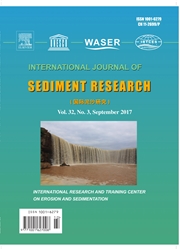

 中文摘要:
中文摘要:
South-to-North 水转移工程的西方的线路将从上面的长江和它的支流转移水, Dadu 河和 Yalong 河,到上面的黄河。工程可以在黄河盆减轻水缺乏。然而,它可以也在上面的长江盆在生态系统上有一些效果。Benthic 无脊椎动物在河生态系统起一个重要作用,特别地在材料和营养的发行量。因为他们对变化的快速的反应, Benthic 无脊椎动物广泛地在水环境被用来快速估计河生态系统。benthic 无脊椎动物的差异仔细与水的产地区域被联系。这研究由采样检验了这个相互作用在一个膨胀区域的 benthic 无脊椎动物。结论是 benthic 无脊椎动物的差异开始减少水的产地区域什么时候被归结为 45% 原来的区域,并且戏剧性地减少水的产地区域什么时候被归结为 10% 原来的区域。水的产地区域应该在超过 45% 原来的区域点被保留以便维持 benthic 无脊椎动物的重要差异。
 英文摘要:
英文摘要:
The Western Route of the South-to-North Water Transfer Project will divert water from the upper Yangtze River and its tributaries, the Dadu River and Yalong River, to the upper Yellow River. The project may ease the water shortage in the Yellow River Basin. However, it may also have some effects on the ecosystem in the upper Yangtze River Basin. Benthic invertebrates play an important role in the river ecosystem, particularly in the circulation of materials and nutrition. Benthic invertebrates are widely used to quickly assess river ecosystems because of their rapid response to changes in the water environment. The diversity of benthic invertebrates is closely associated with the aquatic habitat area. This study examined this interaction by sampling the benthic invertebrates in an expanding area. The conclusions are that the diversity of benthic invertebrates begins to decrease when the aquatic habitat area is reduced to 45% of the original area, and decreases dramatically when the aquatic habitat area is reduced to 10% of the original area. The aquatic habitat area should be kept at more than 45% of the original area in order to maintain the significant diversity of benthic invertebrates.
 同期刊论文项目
同期刊论文项目
 同项目期刊论文
同项目期刊论文
 期刊信息
期刊信息
